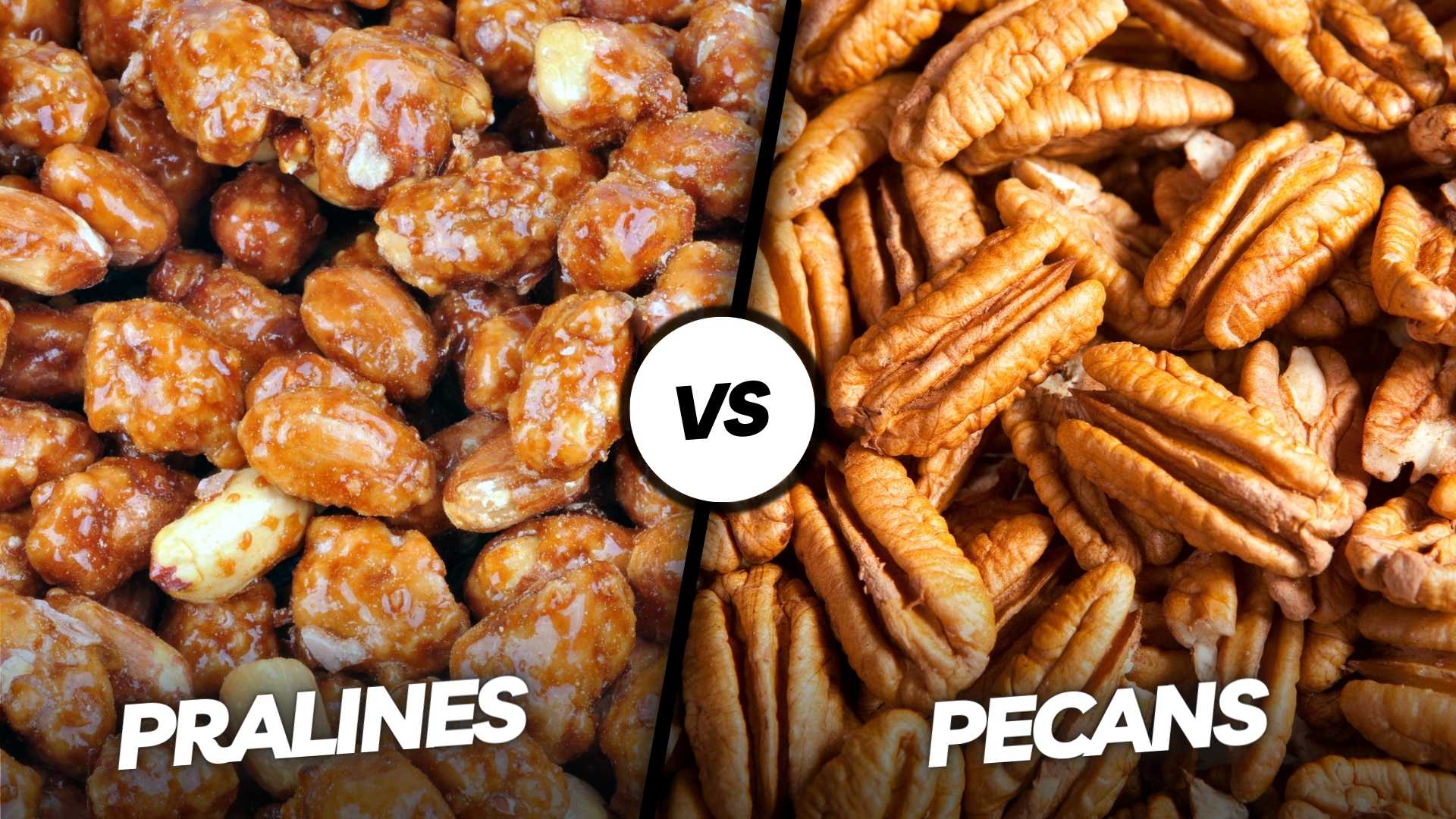Pralines and pecans are both popular types of nuts in the Southern United States, known for their sweet taste and versatility in cooking. While they share some similarities, there are also key differences between the two that make them unique.
In this article, we will compare pralines and pecans in terms of their nutritional value, taste and texture, culinary uses, cost, cultural significance, cooking, nut allergies, and sustainability to determine which nut comes out on top.
Comparison of Pralines vs Pecans
Nutritional Value
When it comes to nutritional value, pecans have a slight edge over pralines. While both nuts are high in calories, pecans are richer in healthy fats, protein, and fiber. Pecans are also a good source of vitamins and minerals, including vitamin E, magnesium, and zinc, which contribute to their health benefits. In contrast, pralines are primarily made up of sugar and butter, with little nutritional value other than calories.
Taste and Texture
Pralines and pecans have distinct taste and texture profiles. Pralines are known for their sweet, caramelized flavor, with a chewy and slightly crunchy texture. Pecans, on the other hand, have a nutty, buttery taste with a satisfying crunch.
While both nuts are sweet, pralines are much sweeter than pecans and have a more dessert-like flavor, while pecans are more versatile and can be used in both sweet and savory dishes.
Culinary Uses
Both pralines and pecans are commonly used in Southern cuisine, but they have different culinary applications. Pralines are often used as a candy or dessert ingredient, such as in praline pie, praline fudge, or praline ice cream.
Pecans, on the other hand, are used in a wide range of dishes, from pecan pie and pecan butter to pecan-crusted chicken and pecan-crusted fish. Pecans can also be used in salads, granola, trail mix, and other snack foods.
Cost Comparison
The cost of pralines and pecans can vary depending on the location, season, and quality of the nuts. In general, pralines are more expensive than pecans, as they require more labor and ingredients to make.
A pound of pralines can cost around $15-$20, while a pound of pecans can range from $5-$10. However, the cost of pecans can increase during the holiday season when demand is high, making them less accessible to some consumers.
Cultural Significance
Both pralines and pecans have cultural significance in the Southern United States. Pralines are believed to have originated in France and were brought over to Louisiana by French settlers in the 17th century. Over time, pralines became a popular dessert in the Southern United States, particularly in New Orleans, where they are often sold in gift shops and at food stands.
Pecans, on the other hand, are native to North America and have been used by Indigenous peoples for centuries. Today, pecans are a staple of Southern cuisine, particularly in Texas, where they are the state tree and are celebrated in pecan festivals.
Cooking with Pralines and Pecans
Pralines and pecans can be used in a variety of dishes and recipes. Pralines are often used as a topping or mix-in for desserts, such as ice cream, cakes, and pies. They can also be eaten as a snack on their own or added to trail mix. Pecans, on the other hand, can be used in both sweet and savory dishes.
Pecan pie is a classic Southern dessert, but pecans can also be used in salad dressings, granola bars, and as a topping for oatmeal or yogurt. Pecans can even be used as a coating for chicken or fish, adding a nutty flavor and crunch. Overall, both pralines and pecans are versatile ingredients that can add flavor and texture to a wide range of dishes.
Nut Allergies
It’s important to note that both pralines and pecans are tree nuts, and some people may have an allergy to them. Tree nut allergies can be severe and potentially life-threatening, so it’s important to be aware of the symptoms and to avoid consuming nuts if you have an allergy. If you do have a nut allergy, it’s best to consult with a healthcare provider to determine the best course of action.
Sustainability
Sustainability is an important factor to consider when choosing between pralines and pecans. Pecans have a relatively low carbon footprint, as they require little water and can be grown in many regions of the United States.
However, some pecan farms may use pesticides and other chemicals, which can have negative environmental impacts. Pralines, on the other hand, are made from sugar and butter, which are not always sustainably sourced. Additionally, pralines require a significant amount of energy to produce, which can contribute to greenhouse gas emissions.
Conclusion
In conclusion, both pralines and pecans have their strengths and weaknesses. Pecans are a healthier option, with more nutritional value and versatility in cooking. They also have a lower environmental impact than pralines.
However, pralines have a unique and delicious flavor that makes them a popular dessert ingredient. Ultimately, the choice between pralines and pecans comes down to personal preference and culinary needs. Whether you’re looking for a sweet treat or a versatile ingredient, both pralines and pecans can be delicious additions to your pantry.

